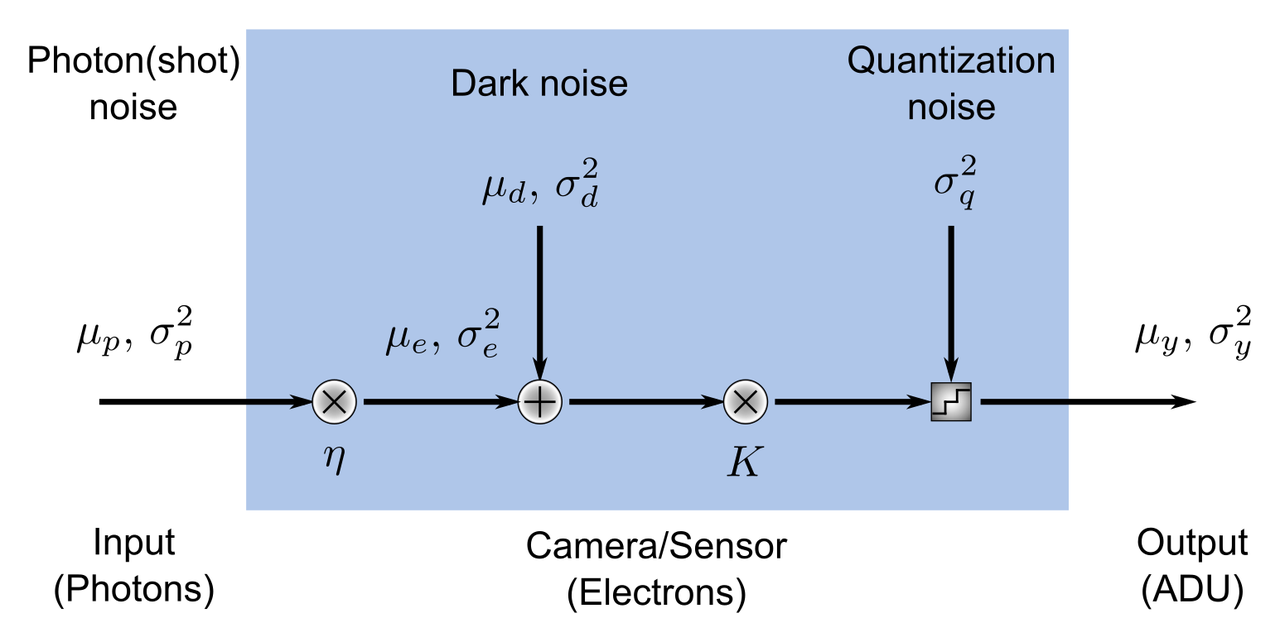


Below is a graph depicting the max SNR of sensors with varying full well capacities: The maximum SNR equation here is an approximation as it ignores other sources of noise since the shot noise is much larger than all other noise sources which are, therefore, negligible.įor strong signals, it can be inferred that sensors with larger full well capacities will have larger signal-to- noise ratios. To calculate the maximum signal to noise ratio of a camera, simply use the following equation, where FW is the full well capacity of the sensor: Due to the Poisson statistical distribution of the noise, shot noise is equal to the square root of the signal. When strong signals are used (lots of light is available) the dominant noise source becomes shot noise – the random nature of the arrival of photons to a specific pixel. SNR takes into account all noise sources. SNR is measured at the specific point when the exposure is stopped whereas dynamic range is calculated at the saturation point of the pixel. The following graphically illustrates SNR and dynamic range as a pixel fills with increased light intensity. *SNR can also be illustrated in decibels, but for the purpose of this article, only linear SNR was used. Units: SNR: unitless* signal: e- or DN (Digital Numbers) noise: e- or DN (RMS) It establishes an indication as to the signal quality found in the image indicating with what amount of precision machine vision algorithms will be able to detect objects in an image.ĭefinition: Linear ratio between recorded signal and total root mean squared noise. The signal-to-noise ratio quantifies the data found in a particular image. Units: Dynamic Range: dB full well capacity: e- (electrons) read noise: e- (RMS) In other words, it illustrates the brightest and darkest areas of a scene that can be captured in a single image and still be read.ĭefinition: Logarithmic ratio between the camera’s full well capacity and its noise floor. Let’s clarify the differences between DR and SNR by providing definitions, equations, and descriptions for each.ĭynamic range quantifies the working range of a camera within which usable data can be extracted. This is likely due to the similarity of both measurements. Need help on some of the basics in your camera selection? We have many helpful blog ports ranging from Calculating camera resolutions to understanding interfaces.Dynamic Range (DR) and Signal-to-Noise Ratio (SNR): Two terms that are often confused with one another when discussing or comparing cameras. Contact us to discuss and obtain this information. The EMVA 1288 information is available for most cameras upon request. At saturation, temporal dark noise is insignificant compared to photon shot noise and can be ignored. Signal to Noise at Saturation: Ratio of the maximum signal (saturation capacity) to noise (photon shot noise).Dynamic Range: Ratio of maximum signal (saturation capacity) to the minimum signal (temporal dark noise).Saturation Capacity: The maximum number of electrons each pixel can hold before reaching non-linear response.Due to electric dark current, quantization noise, and other noise sources depending on the specific construction of the sensor and the camera electronics. Temporal Dark Noise: Noise when no light is hitting the sensor, also known as read noise.Due to the randomly distributed particle nature of light. Photon Shot Noise: Signal noise equal to the square root of the incoming photons.This is important to understanding low light performance! The point where signal equals temporal dark noise. Absolute Sensitivity Threshold: The smallest detectable amount of light.Terminology along with the definitions (Courtesy of Allied Vision!)


 0 kommentar(er)
0 kommentar(er)
